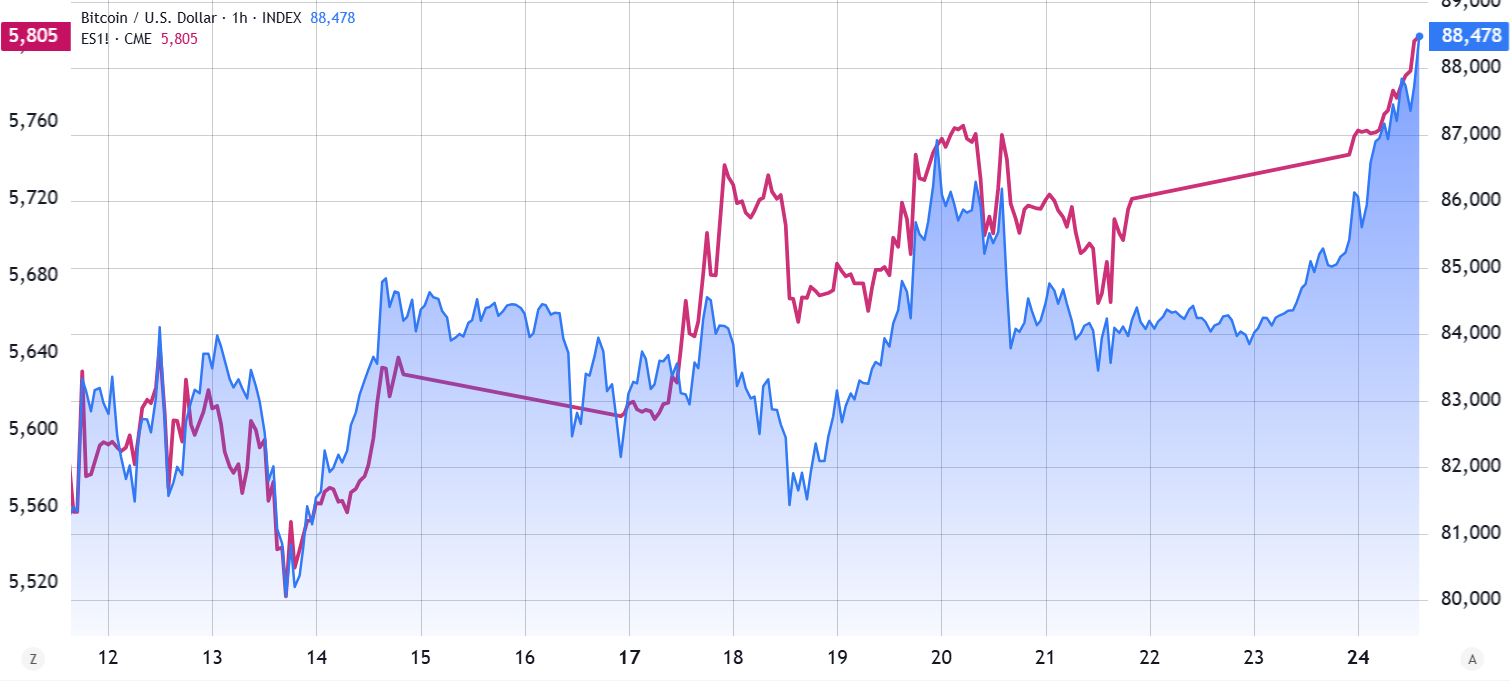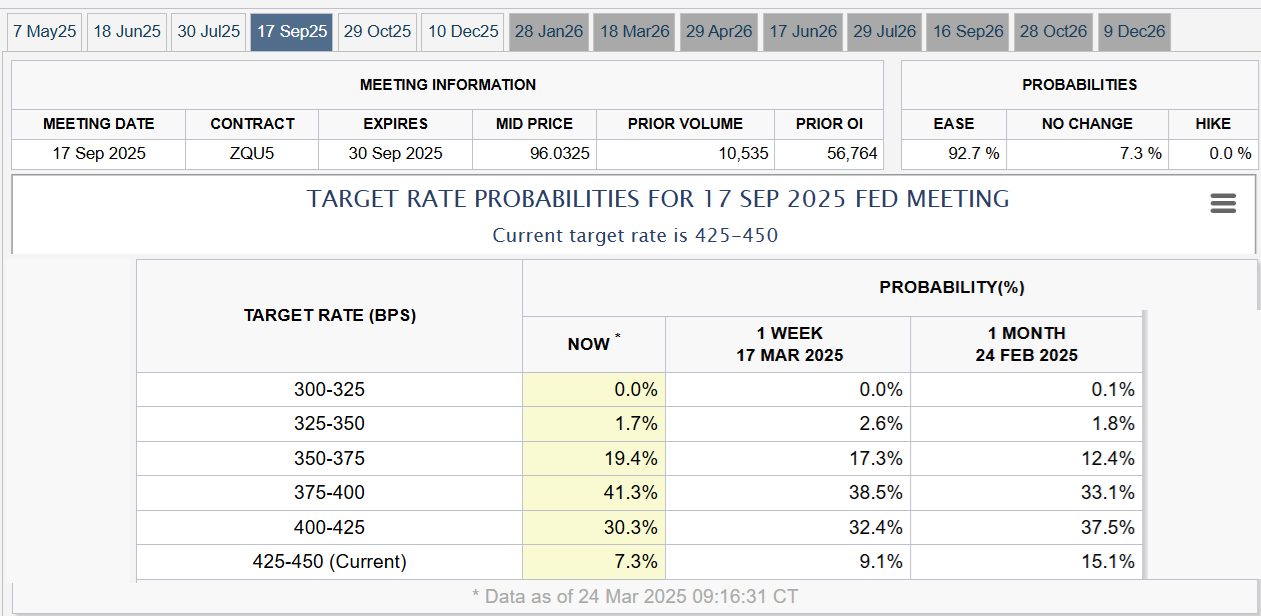The price of Bitcoin (BTC) experienced a 3% increase on March 24, pulling away from its low of $76,900 recorded on March 11, though it struggled to hold the $88,000 threshold. Traders are now contemplating the potential catalysts that could push Bitcoin’s daily close above $92,000, a level not seen since March 3. Adding to the frustration for cryptocurrency investors, gold is trading only 1% below its all-time high of $3,057, while Bitcoin remains 19% off its peak.

S&P 500 futures (left) vs. Bitcoin/USD (right). Data source: TradingView
Some market analysts attribute the recent uptick in Bitcoin’s price to the US-listed firm Strategy ramping up its BTC reserves, while others emphasize macroeconomic indicators like declining inflation expectations and a more lenient approach from US President Trump regarding tariffs. Despite this favorable scenario, traders are left questioning what might be hindering Bitcoin from sustaining its upward trajectory.
Bitcoin’s growth potential is constrained by recession fears
Economists anticipate indications of a downturn in the “core” Personal Consumption Expenditures (PCE) index, expected to show a 2.7% rise in February, according to recent reports. This figure, which the US Federal Reserve favors as an inflation measure, is scheduled for release on March 26.

Implied expectations for the Sept. 17 FOMC. Source: CME FedWatch tool
If these expectations hold, the easing inflation trend would align with Federal Reserve Chair Powell’s comments on temporary inflation, raising the likelihood of two interest rate cuts in 2025, as suggested by Treasury futures.
As the US central bank moves toward a less restrictive monetary policy, risk markets generally benefit from heightened liquidity and diminished appeal of fixed-income investments. However, there remains significant uncertainty surrounding economic growth.
Concerns about recession are intensifying among investors due to inflated valuations in artificial intelligence stocks and fears that cuts in US federal spending could adversely affect consumers and the commercial real estate sector. While these factors have little direct impact on Bitcoin, traders are apprehensive that all risk markets could be negatively affected if stagflation becomes a reality.
Reports indicate that President Trump is contemplating reducing some tariffs originally set for April 2. Although this remains unconfirmed, it implies he may exclude certain industry-specific tariffs and provide exemptions to specific countries. On March 24, S&P 500 futures rose by 1.5%, as investors perceived a lower risk of economic contraction, potentially bolstering Bitcoin’s price trajectory.
Strategy increases Bitcoin holdings, but is their approach sustainable?
On March 24, Strategy disclosed that it had acquired an additional $584 million in Bitcoin, bringing its total holdings to 506,137 BTC. The funding for this latest investment resulted from the sale of 1.97 million shares of common stock, coupled with an extensive $21 billion STRK perpetual preferred stock issuance program. These expanded fundraising capabilities enhance the company’s chances of achieving its ambitious goal of $42 billion in Bitcoin acquisitions.
Though this news appears favorable for Bitcoin in the short term, should the US Federal Reserve adopt expansionary policies, it may lead to accelerated corporate earnings, making stocks appear more attractive. Likewise, a diminished risk of a global tariff conflict could benefit the stock market and alleviate pressures in the artificial intelligence and commercial real estate sectors.
Related: Bitcoin ‘more likely’ to hit $110K before $76.5K — Arthur Hayes

Source: DexyyDx
Critics contend that Strategy’s actions have been pivotal in supporting Bitcoin’s $80,000 level, posing a risk of price corrections should the company fail to secure additional funding or suspend its stock issuance program at any point. Nevertheless, this perspective seems to overlook the fact that Bitcoin spot exchange-traded funds (ETFs) saw net inflows of $786 million between March 14 and March 21.
Ultimately, Bitcoin is well-positioned to reclaim the $92,000 mark, though it remains heavily influenced by broader macroeconomic conditions. Regardless of gold’s price movements, investors consider Bitcoin a higher-risk asset, exhibiting a stronger correlation with stock market trends in the near term.
This article serves only for informational purposes and should not be construed as legal or investment advice. The opinions expressed herein are solely those of the author and do not necessarily reflect the views or opinions of any specific organization.
